Banshee target drones are operating from HMS Prince of Wales alongside F-35B jets.
Banshee is one of a number of target drones provided by Qinetiq, you can see more of their range by clicking here.
Aircraft carrier HMS Prince of Wales is currently at sea for her first period of concerted training with fifth-generation F-35 Lightning stealth fighters (although the first F-35 landed onboard earlier this year).

The carrier will soon participate in the largest military exercise in the UK, Joint Warrior, off the Scottish coast.
Operating crewed and un-crewed air assets in the shape of @thef35 and the Banshee from @QinetiQ is another big step forward on our journey to joint carrier strike capability.
They also look pretty cool!
✈️✈️🛩🛩😎😎@OC207Sqn @RAF_Marham pic.twitter.com/PlbnpQJFRC— HMS Prince of Wales (@HMSPWLS) September 8, 2021
Another close up of the drone shows Fleet Air Arm markings.
The Banshee Jet-80 drone was developed by Qinetiq, on their website they say:
“Developed from the successful Banshee target, this twin-jet engine powered version was developed using knowledge and experience gained whilst operating the single jet engine variant which entered service in 2010.
The current version is fitted with twin 40kg thrust gas turbine engines giving a total of 80kg of static thrust. This offers an increase in the maximum straight and level airspeed of up to 180metres/second. The use of an auxiliary fuel tank ensures that endurance is similar to that of the single engine version with a typical mixed throttle mission time in excess of 45 minutes.
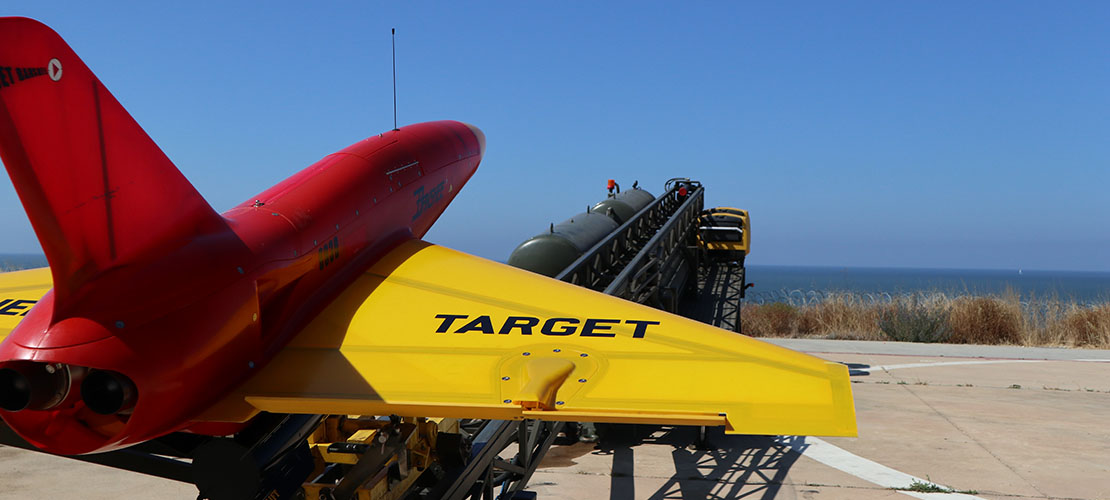
When fitted with the patented Hot Nose the target provides a forward and side-looking IR source with output in Bands I, II and III, whilst the jet engines provide a realistic rearward looking IR signature. All other well proven augmentation devices traditionally available to Banshee can be fitted to this latest twin jet engine derivative.”
New Toy Day for #PWLSAtSea! We’re testing “Banshee” by @QinetiQ as a training, testing and evaluation method for simulating airborne targets at sea.
Capable of up to 200meters per second, it’s twin gas turbines mean it’s pretty quick!
✈️✈️💨💨🎯🎯 pic.twitter.com/KobVRHSUEV— HMS Prince of Wales (@HMSPWLS) September 2, 2021


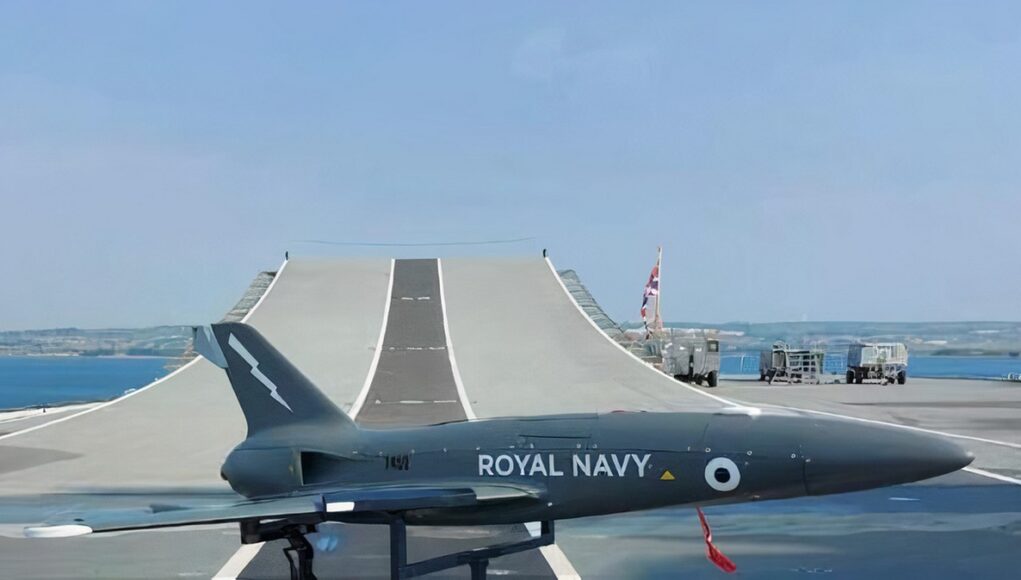


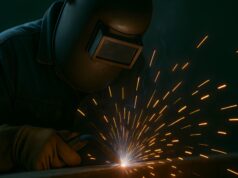

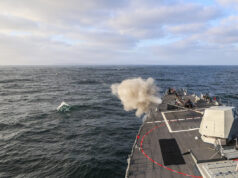
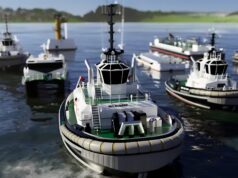
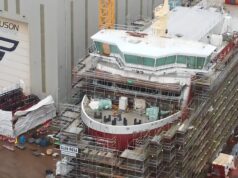
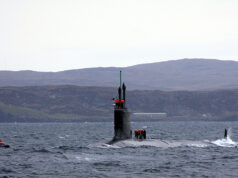
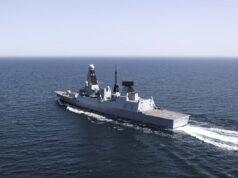

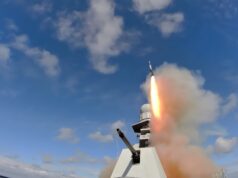

A silly question to start… Is the Banshee drone recoverable or one use only?
They are recoverable, allowing the target to be used again. They have a parachute and can be recovered by a sea boat/helo.
I suspect this will help replace the Hawks in the aggressor role.
So they are plucked from the ocean, how do they prevent destruction by salt water? Particularly ingres via tail pipe?
Must be total rebuild…the engine ain’t gona
like salt water.
remove engine and dunk in fresh water barrel ,blast with air line .Then into a barrel of liquid a bit like WD40 flush through and allow to dry the electronics are conformal coated .You can start the engine the next day , Simples
And the operators are out off harm’s way and cheaper to train no more towed targets Canberras or shellducks lord I’m showing my age
And that is in the days before safety became the thing it is now.
In those days it was OK because “we know what we are doing”…..
I recall a few hair raising incidents…..where quick thinking averted…..
Exactly theirs a few Canberra crews who either went grey haired or filled their flight suits when someone didn’t get 15degrees of separation correct whoops that was close
Maybe they can parachute it onto the ship because it’s big enough area.
Perhaps they should have a word with Musk to see if they can get those nets that he intends to use for second takes or Rocket Lab and their heli captures of their rockets. This sounds like I might be a doddle by comprising.
Meanwhile I wonder if the parachute them over land.
I take it these drones don’t return with a fig leaf.
Would be interesting to know if the Banshees are using the ski jump for take-off.
No undercarriage, so Banshee is rail-launched and its inbuilt bouyancy allows recovery from the sea.
Hmm, a rail could conceivably be described as a catapult style device, so perhaps this is a contender for the RN’s recent request to industry for a drone catapult.
No, this is far too small. A banshee is 70kg fully loaded. For the cats , they’re looking for up to 55,000 pounds (25 tonnes). And for the traps they’re looking at 47,000 pounds.
Qinetiq has a design where their launch Rails run up the sides of the ski ramp.
they have been shooting drones for some time, its as they get larger the issues occur.
I wonder what the Royal Navy of 40-50 years ago would have thought about one of its capital ships communicating to the public through the use of sun glasses face and aircraft emojis. Is this cringe or a good modern way of getting the message out?
Hi Something Different,
I quite like it, makes me smile. Seeing the ships communicate directly with the public is important in this day and age and it is something the RN appears to be getting quite good at. The other thing to note is that this is building a positive image and filling a communications gap that would otherwise be taken by other less friendly players.
Cheers CR
I think that it’s a positive but it does raise expectations. While no one would expect a ship on active ops to be messaging some “silences” can be embarrassing. Case in point is when HMS Diamond’s twitter feed suddenly went quiet when she had to leave CSG21 with propulsion difficulties only to go live again a month or so later when she finally made the transit through Suez.
Hi Y Ddraig Goch,
That is a very good example. Whilst I can understand the RN / MoD wanting to paint a good picture I think a bit of honesty would help people to understand just how hard are service people really do work to protect us even when they are not on high threat operations.
HMS Diamond’s engineers, I am sure, would have been working hard to try and identify and posiibly fix the problem without a stop over. When a stop over became inevitable they would have been hard at it planning the port visit work and liaising with Northwood or which ever support HQ / contractor was involved. All of this would have been quick reaction stuff.
The odd thing is there is a great episode of a programme about HMS Illustrious on her last deployment. One over her turbine broke while she was on her way to join an US UK exercise. Fortunately, the North Atlantic was mirrior calm so she stopped and the engineers swapped out the broke turbine and put in the spare! Brilliant!
So why not Tweet about fixing the T45? OK I know some would be all negative but getting a head of that is what the MoD is supposed to do!
Cheers CR
If the armed forces want to engage with the youth……….. Us old(er) fogies must just look past it 🙂
It worked for Tom cruise with Top Gun the US careers offices saw a rise in recruiting for the US Navy after its release
What did your dad think of your fashion/music when you were young. Times change if it works it’s worth it.
This is a misleading headline. Just firing target drones have not the same quality as “drones operating from”
The ship disagrees “Operating crewed and un-crewed air assets in the shape of @thef35 and the Banshee from @QinetiQ”.
The fundamental problem is that drones can mean everything from small quadcopter drones over target drones to the massive XQ-58 Valkyrie. Journalists should call out the MoD if their PR speak is trying to imply something while it is technically not lying (too much).
Ship is correct, they don’t promote the banshee to drone status.
So they’ve got the red ones onboard for target practice and the grey one for the photo op. I suppose it will be useful for the crew to get used to handling uas from the decks but only those who get their defence info from the tabloids will believe these have any potential for offensive use.
Strap big ass bomb to it and make it a suicide drone..
endurance up to 1 hour, max speed 250 m/s so could go quite far depending on radio signals, not sure if it has to be line of sight or program the let it go… The Banshee NG New Generation Aerial Targets by QinetiQ add a bomb might make it say 30 mins endurance instead… still fair distance
We already have suicide drones they are called ship to ship missiles, cruise missiles etc that can fly supersonic and carry a nasty warhead
Yeah on our subs tomahawk, but the 3 harpoons left isn’t exactly scary.. 30 banshees maybe upgraded faster ect would put any ship out of action, maybe.
Our SAM’s would work too. Especially with a few litres of fuel to burn.
Drones have rights to… you you dronophobic.
Hi Bloke down the pub,
Couldn’t agree more, however, it does give the crew and RN early access to the type kit they may be called on to handle in the future (all be it likely to have a proper undercarriage). I also wonder if they will be launching them fro the carrier during the up coming exercise – possibly to the side of the ramp? There is a markee visible to the side of the ramp behind the red Banshee in the first phote on the Twitter feed. Perhaps the fitting of some extra equipment to launch the Banshees at sea? Can’t whay you’d put so many on board if you weren’t going to blast them off the deck, so I think quite likely.
With only a limited number of F35’s and helicopters on board it would give participants in the exercise an extra dimension (even if they may not able to fire at the drones) and an early insight into operating drones from the same deck as F35’s. The latter point would be particularly important given that the RN appears to be looking very closely at future drone operations as suggeted by the RFI issued recently for EMALS CATS and TRAPS.
It also occurs to me that this is how the second carrier will be utilised at least initially, mixing training with trials. Quite a clever approach when you think about. You basically get plenty of techie data to advise your future plans and you end up with a second well trained crew that can step up if needed. This will definately come into its own when we get a few more aircraft…
All in all shows the RN is working very hard to make the very best of its fleet.
Cheers CR
Couldn’t we strap big ass bombs to these and make them swarm suicide drones.. 30 of these coming towards you some high some low, would be terrifying.
Even without bombs, the enemy would surely expend a lot of expensive missiles taking them all down.
M@
Good point, wast all their missiles and use anti ship missile.
Agreed. This is why I quite like the idea of having a Type 31 frigate in the Carrier Strike Group. I’d rather throw a few rounds from its guns than waste missiles on cheap slow drones that are potentially only there as a screening force/missile magnets. Anything high performance can be left for the T45’s Aster missiles. Just my opinion anyway. Others would probably say, why wait, hit the target as far away as possible with missiles. But at the expense of depleting our limited missile supply, I’m not so sure. I’m eager to see more about the capability of Dragonfire Lazer weapon too. Pretty sure I read somewhere recently that the army were looking at hard-kill solutions for drones… wonder if there could be some collaboration with efforts in the maritime space. Heck maybe Dragonfire will do both… on days that aren’t rainy and foggy 😉
M@
That surely is why most of the RN ships have 20/30/40mm cannons fitted?
I agree that it is pointless using expensive missiles where cheapo reloadables will do a fantastic job. Thing is you can afford to keep a lot of 30mm dumb rounds to hand as they don’t cost fortunes – even the decent ones….
The army were looking at things like 40mm with smart ammunition.
Interest is back to cannon now longer range smarter rounds are real.
30mm HE ,HEI, HEIT. There as good as their Aimer Haven’t the faintest where baby gunners in training do a live firing now that HMS Cambridge has gone unless they do Virtual gunnery
Realistically most of it is done by the CMS software modules?
MiM is only there as a circuit breaker if there is error.
Love a live firing it’s a senses thing got you in tune with what you were trained for SU orAA can’t beat the sound and smell and the vibrations of letting loose at the of Order ‘Alarm” aircraft and trying to down a chukka, its just stripping down and sponging out that was a bummer whilst WDP ctews minced off for 4o’clockers
I see the Dutch are looking to replace their Goalkeeper ciws with a combination of short range missiles (SeaRam) and guided ordnance for 76mm guns.
That is the same thoughts Italy has been having. They are getting rid of the twin super forties as CIWS. Instead they will be using the DART round from the OTO 76 as the CIWS.
If we have the numbers available then I also think a T31 would be handy deployed with a CSG. It would act purely as the carriers goalkeeper, using what ever it has available to stop any leakers that get past the T45s. Dare I say it, but a sacrificial lamb to protect the carrier.
Better we had 40mm/57mm/76mm on the carriers than the very short range 20mm Phalanx. I think taking up an AA position with just the very limited 30mm chain gun was very foolish. A proper AA gun of that caliber would be able to do everything it can plus AA.
Reminds me of Red Storm Rising where Soviet Naval Aviation used hundreds of obsolete drones to spoof the USN into expending all their Phoenix AAM before the real threat came from another quarter.
Tom Clancy? Must add that to my list! Hence why intelligence gathering is so important!
M@
Yes mate. Damn you’ve not read it, I say no more!
Don’t let Jack Ryan know
According to the author, when he was researching the details of the attack on the carrier fleet, he ran through a number of wargame scenarios with actual US Navy personnel. He said everyone was shocked at how effective the decoys were and how open the fleet would be without the aircraft’s long range stand-off weapons.
Red storm rising that’s so 1980s, read that when I was a kid. Had the computer game as well, now that was a great old game.
His book submarine is very good, it’s none fiction (ish) and compares a British and American boat, lot of discussion on training, culture etc it’s a not bad read, not up to the standard of understanding navel warfare etc but still good light read.
Yeah quite agree you wouldn’t see the whites of their eyes
Yes, it worked for Israel and the USA. That is basically how the Harop suicide drone came about. The original much smaller aircraft was used as a target drone. But then someone realised with a 4 hour endurance it would make a good surveillance drone as well. Then someone though lets fill the space behind the sensor with explosives so that it can also attack targets as well. Its worked pretty well in both Syria and Armenia.
Meanwhile the USA have used target drone aircraft as decoys for a number of missions in the past, most notoriously Gulf War 1 with the BQM-74. Kratos who make the BQM167 that replaced the BQM-74, can also be used as a decoy drone. It has also been trialled as loyal wingman drone and has even dropped payloads on targets. This then led to them building the dedicated XQ-58 Valkyrie loyal wingman drone.
When you think about it, there is very little difference between an enthusiasts radio controlled model aircraft and one of these. Both can be built in a shed or garage, radio controlled, with a point of view digital camera providing live feedback. It would be incredibly easy converting one for nefarious means.
Scary that on the surface we seem to have ignored these sort of drones either defensively or offensively till now. It was all pretty predictable at least ten years back when the hobby drone business really started to take off.. quite literally. Clearly others haven’t, offensively anyway.
This continued dronophobic behaviour is worrying, get help reaper, it’s it to late.
Could someone explain what function these Banshees fulfill?
I get the use of manned ‘aggressors’ for pilot training but can a Banshee replicate that in terms of air to air combat? Clearly a Banshee, but not a Hawk, can be shot down but given the cost, apart from in special circumstances; I assume that they don’t actually shoot them down.
As to testing the carriers defences, can it replicate an incoming subsonic missile? Ignoring the reality that the incoming AShM is almost certainly going to be supersonic.
Not air to air. Check out CATS “Combined Aerial Target Service”, provided for years now to the MoD once we privatised its provision. ( As usual 😠 )
Our DERA, now Qinetiq, has used such drones for years from Aberporth and once upon a time LLanbedr.
Painting one in FAA grey livery is a nice touch but just PR spin.
Ahh I remember going from MoD to DRA to DERA to Qinetiq. It was cringy the way they announced the new name with the new signs on site being covered until the announcement. Then it was how the hell do you pronounce it 😅🤣😂
At least ranges remain MoD owned under the LTPA and the “best bits” of DERA were retained as DSTL.
I found the privatisation of DERA scandalous myself.
Always thought it pronounced like kinetic as kinetic energy.
I would like to see some developments in the area of hypersonic detection and engagement. Practicing against small drones is one thing. But if nations are perusing missiles that are getting faster and faster, that’s a threat we really need to be training for.
M@
Both Sampson and S1850M can track hypersonic targets.
Yes that’s very true. My only query here and hopefully someone might be able to illuminate on the subject, is that I have read that highly manoeuvrable hypersonic missiles take advantage of the fractional breaks in updating tracking info and predicting its movement that a rotating radar provides. Clearly Samson with two plates (potentially 3 at some stage) is designed to minimise this problem but it was never designed surely to anticipate these highly manoeuvrable hypersonic be they ballistic glide bodies or cruise. What’s the opinion on this question.
I like the quip -“illuminate” – lol.
The issue is especially with older style mechanically scanned pulse doppler radars. Even though the radar pulse is travelling at the speed of light (in the atmosphere). It will still take time to reach the target and then bounce back. If a target is a very long distance away say over 400km. A radar will have to drop its pulse repetition frequency (PRF) and extend the pulse repetition intervals (PRIs). This is because you have to account for the time that the leading edge of the pulse hits and interacts (dwell time) with the target, then makes its return journey to the antenna. If you have a very small time between each transmission. The receiver will have a hard time to decipher the information and you will generate a lot of ghosted targets. There are some tricks that modern radar do that can use a high PRI against a very far away target, but that is a chat for another day!
For older mechanically rotating radars. This can be a problem when tracking a hypersonic target. For starters a mechanical scanned radar’s beam is fixed perpendicular to the axis of the centre of the antenna, where it relies on the antenna moving up/down and around to generate the height and bearing information (yes admittedly, you can split the transmission through different horns as it exits the waveguide to change the elevation angle ala Searchmaster 2000, but we’re keeping this relatively simple). Therefore, as it rotates the target is lost until the antenna has rotated and scanned it again. During this time the radar with a digital ECU will track the target and use a predictive tracking algorithm (PTA) program to guesstimate where the target is during this radar dead zone. This is then used to align the radar to where it believes the target will be. Where it is then used to re-illuminate the target and the software gets updated.
If the targets are hypersonic MIRVs or just a single re-entry vehicle. This isn’t much of a problem as they generally have limited manoeuvrability once they have left the launch vehicle and then follow a relatively predictable path to their target. However, if we are now talking about a hypersonic glide vehicle (HGV). These have the ability to radically change their course following release. Therefore, if a traditional radar was tracking the HGV, there’s a very good chance that it would initially loose the target every rotation, as it has moved away significantly from it predicted track.
This is where the benefits of electronic phased array scanning helps. If we look at a single fixed flat panel electronically scanned array, be that passive or active (PESA or AESA). Then the beam is formed by positive and negative phase interference, where they add together to build up the strength of the beam, but also depending on how the time delay circuit or transmitter-receiver module (TRM) are programmed, controls the beam’s angle. The beam can be electronically swept left to right and up and down. The beam’s sweep is significantly faster than a mechanically steered beam’s sweep, and with an AESA sweep it is again a magnitude faster in sweep than a PESA can manage. In general the ESA flat panel array is limited in left to right sweeping of +/- 60 degrees and a vertical sweep of +/- 45 degrees about the centre of the array. It is possible to extend this field of view but it gets proportional more expensive to do so, and the effective range drops off exponentially.
However, with a flat panel the target if it enter top right of the ESA radar’s field of view and is travelling to the left, it will be tracked for 120 degrees, instead of the mechanically scanned one’s few degrees. If we take this further (it will require a bit of headspace to imagine) and we now attach the ESA panel so it can mechanically rotate at say once every 2 seconds (30rpm). Then the target depending on its speed can be tracked longer as the very fast sweep of the electronically steered beam sweeps back and forth. At some point in the rotation the target will still be lost and enter a radar dead zone. Whereby the radar’s ECU will need to use a predictive tracking algorithm (PTA) to guesstimate where it will be, once the array rotates enough for it to be re-illuminated. But here’s the benefit of a ESA, as the array doesn’t have to be perpendicular with the target for the beam to re-illuminate it. The target just needs to be within the array’s field of view. Therefore the actual time in the dead zone is much reduced.
Now, if we consider something like Sampson, that has a pair of ESAs mounted back to back. They physically will have two 60 degree dead zones found between the two left and right edges of the field of view windows of their respective arrays. However, because the arrays are rotating, the dead zones are also rotating. But because we can electronically control the two beams direction, we can reduce the effect of the dead zone and reduce the amount of time the predictive algorithm is needed. It’s not ideal, but it will still work against a Mach 5+ target.
When Sampson was first designed, its priority target was sea skimming missiles, followed by diving missiles, as these were seen as the predominant threats. However the research they did at the Isle of Wight, showed that it would be more than capable of tracking ballistic missiles, so this was also added to the software. When doing trials off Hawaii. It was found that both S1850M and Sampson could track low earth orbit ballistic missiles, whilst S1850M could track medium orbit ballistic missiles. Sampson went further by successfully tracking MIRVs, I would expect S1850M to be able to do this as well, but there is very little info on it. As I have alluded to Sampson is a digital software controlled radar. It may not have had a front end (TRM) upgrade, but the software and the signal processing has been continuously updated which is more important. Hypersonic Glide Vehicle (HGV) tracking would have been part of a software update.
The S1850M should be able to initially see a HGV, tracking it may be an issue as it’s a single rotating panel that rotates once every 5 seconds (12rpm). Therefore, it will have to use the PTA a lot more. If the HGV dances about the sky as it falls, it should still be tracked, but the updates may take longer as the S1850M tries to search for it, when the link from the PTA fails. However, as the S1850M is PESA, its beam’s sweep speed should find it really quickly.
To be honest, radars have been tracking hypersonic targets since the late 1940’s due to the space race. If the target follows a predictable track, then even mechanically steered radars can follow them. The problem comes when they manoeuvre away from the predicted track. Mechanically scanned radars have a real problem keeping up with them. AESA radar in particular is the answer to HGVs. No matter the hypersonic speed they will not be able to outrun or outmanoeuvre an electronically beam steered radar. The issue of tracking the target is purely a software problem attributed to its range gating. Which is where a target is measured between a point A, B and C, to measure its relative velocity to determine if the target is real or not. But as AESA is digital the range gating can be done almost instantaneously plus the radar can use many more multiple range gates to continuously monitor the target.
A ship equipped with the latest four panel SPY-6 radar, will have the best ability to continuously track a HGV. The problem they will have, is from high altitude very steeply diving target threats, as they will also have a large radar blind spot directly above the ship.
It’s amusing, or scary, take your pick, that the Russians are claiming their Hypersonic missiles are effectively impossible to defend against while in recent weeks somewhat superficially contradictory, claiming their own missile defences are more than capable of defending against any prospective US Hypersonic weapon no matter how capable or fast. Equally they are claiming, and this is apparently part of their argument apparently that US inferiority in the production of Titanium alloys means they are less able to produce highly manoeuvrable hypersonic warheads ie resisting the generated heat. I can only guess that all that effort and horrendous expense, building Titanium Submarines has been of some benefit here, or they want everyone to believe it. That said as the US is asking Musk to help with heat shield technology they may have at least a short term point.
There was a budget for testing things against drones…..so yes things were shot down and still are……you have to every now and again: just to be sure it all works as it should.
For a period of time this was done stateside, then subsonic came home and to keep the French happy supersonic was done with them. Which was fine when T45 was just Aster.
Now the missile mix is more complex and getting more sensitive we will need the results to stay at home.
The drones can be equipped with a deployable IR or radar reflective target. As per the Hawk and Canberra days, the target is reeled out via a cable, therefore if conducting live missile training the target is hit rather than the drone. The drone after its tasking, can then deploy a parachute and land then be recovered for further use.
The Banshee 80 can fly as low as 5m and at speeds of 400mph. The 80+ at 450mph, whilst the new Banshee NG has a straight and level speed of over 550mph. They can be either programmed to fly via waypoints or continuously controlled. The new NG is a step up in capability, as it can fly as high as 12,000m, has an endurance of over an hour and can do 9G turns. It also has a higher payload capacity for carrying more electronic warfare gear.
There is a question nobody has asked yet. Can the Banshee when launched be controlled by an accompanying F35B? Perhaps these are also testing the ability of using a loyal wingman from a ship?
Yes that latter point crossed my mind.
It lets you know your a bit buggered and about to be shuffled off.
Could these be used to fake an attack whilst the F-35s sneak in from some other vector….
Yes, The Banshee 80 has a very low cross section. They use Luneburg lenses to enhance the drones RCS. The new Banshee NG has an even smaller RCS. The issue would be range as they generally only have an endurance of about an hour, though I’m sure that could be sorted.
Could always think of Air dropping the Banshee with a payload
When we going to see it take off..? Where will the rail be? Next to ski ramp? Hanging off the side?
When we used the old fashion prop shellducks areal targets were launched from an RFA rather than from the target vessels
beautiful
Hope that there’s no Woke Guardian readers browsing through this article they’re be quite annoyed that “BANSHEE” Irish folklore is being used another case of Cultral misappropriation by Colonialists boo whoo
Yes, Shee are “Sidhe” Faerie.
Thank bjesus they didn’t name it leprechaun
LEPRecon
It’s the way I tellum
we are all going to die……
If they are not careful cliodhna will come and claim ownership, just luckily she’s not been herself since the famine.
“cleena…..has not been heard ever since lamenting any of our race, though I believe she still weeps in the mountains of Drumaleaque…….where so many of the race of Eoghan Mor are dying of starvation”
Dank da lord , whoops trying too text an impression of beautiful brogue ,alas she hasn’t been seen or heard from since the famine .I wonder if our Banshee could be adapted for famine relief Air drops I’m really treading a fine line here ,I do hope I’m not offending anyone
Lol naa, funny is not offensive ( well sometimes but who’s perfect).
I placed the last line in my previous post just in case A Guardian reader ventured onto UKDJ can’t go round upsetting anyone from the people’s Republic of Islington whoops done it again
The guardian is a perfectly good paper for general news, but just like the telegraph it’s best to take its political and social commentary with a pinch of salt. Otherwise before you know it you end up being really boring down the pub and having a fight with someone who reads the other paper…broad sheet smack downs…..love em.
Thank you Jonathan for input concerning the said left and right angles of news consumerism ,indeed One does have too take most of their indepth correspondence no matter how thought provoking with as you said a pinch of salt .Now of to the Doctors to check on my Sodium levels
There has to be a future in rotary wing drones providing UK carrier strike (& smaller platforms) with surface search, AEW & tanker provision. Imagine a networked umbrella of drones providing AEW so that if you lose one the others can compensate by shifting position. They’d be able to stay on station longer being able to carry more fuel and not having to house the human interface in the aircraft. Someone, somewhere is going to invent this pretty soon.
Imagine it won’t be a long wait. I’d add 3D printers to the mix as well. The futures always hard to predict but it’s coming and it’ll look very different to the present.
Yes I think all the work being done with e-taxis and all the related almost endlessly varied aircraft being proposed will mean a lot of such designs directly or inspired by by it will enter the military field over the next decade. Deciding what the focus or capabilities should be and anticipating fast moving technological development will no doubt be the obvious drag on them being utilised properly I suspect. As written on this site often, using the Ajax as the prime example when a basic design enters a process of endless changes and enhancements and upgrades occur you to often get a camel over a thoroughbred, a late one too
The USN has shown that it can network together a pair of E2D Hawkeyes along with F35Cs using MADL, CEC and Link 16. They used the F35s to stealthily inspect targets of interest, thereby allowing the air commander to make a go/no-go decision on attacking the target. For a CSG having a pair of E2Ds networked with the strike group is a massive force multiplier, as it provides a huge surveillance umbrella.
The idea of using smallish rotary winged drones for AEW is I’m afraid a non-starter, as it depends on what type of rotary winged drone it is, but crucially how big it is! If you want an effective radar range comparable to an E2D Hawkeye (over 600km), then you also need a corresponding large radar that operates in a lower frequency band say upper UHF, L or S. The size of the antenna is proportional to the operating wavelength. A L-band radar operates between 1 and 2GHz = 30cm to 15cm. But you can get away with using a 1/4 wavelength antenna, which means you can uses an individual antenna horn size between 7.5cm to 3.75cm. If we now decide the radar is going to be an active electronically scanned array (AESA) radar, as they’re better for low probability of detection, target resolution, anti-jamming and tracking hypersonic targets. Then the number of individual transmitter-receiver modules (TRMs) that are used to build up the array dictates the narrowness of the transmitted beams diameter, but also the effective radiated power (ERP) of the transmission. For a really nice round beam, you need an equal number of TRMs vertically as you do horizontally, but a rugby ball shaped beam is ok, which means the TRM arrangement can be more rectangular. Oh yeah, you need a minimum of a 1/4 wavelength spacing between each TRM, otherwise you’ll have feedback problems.
If we consider the E7 Wedgetail, its multipurpose electronically scanned array (MESA) is an AESA radar operating in the L-band. It doesn’t use TRMs in the conventional sense, but instead uses manifold arrays. These are mounted back to back in the fin above the fuselage and in the toe and heel of the top hat part of the fin. The fin measures 10.7m long, 3.35m high and weighs 2950kgs (6500lbs). Within the fin sides the manifold arrays take up 7.3 by 2.7m of area.
This arrangement allows the radar to have an effective detection range against a target with a 1m3 RCS of around 300 miles (482km). This radar has some performance benefits over the AN/APY-9 UHF radar used in the Hawkeye, even if the overall detection range is lower. Spotting small, low and slow targets will be a lot better plus, it has the benefits of producing a much tighter transmitted beam.
The MESA radar is huge, hence why a Boeing 737 was used as the carrying aircraft. Even if we removed all of the crew plus their consoles and environmental systems to operate it remotely, you would still need a large aircraft to carry the radar with sufficient electrical generation to power it. Perhaps something like a Bombardier business jet could be used. Unfortunately with radar, the detection range is tied down to the operating frequency and the effective radiated power. We could use an X-band radar (8 to 12GHz) that uses a wavelength of 3.75cm to 2.5cm, much like the Crowsnest’s Searchwater 2000. But these have a limited detection range due to how atmospheric attenuation affects the transmitted pulse. You can ramp up the power to try to overcome it, as per fighter aircraft radars, but you will also need to increase your component cooling, electrical generation and everything else that entails.
The Leonardo Osprey radar is a lightweight AESA radar that is being used by the USN on their MQ-8C Firescout helicopter drones. But is also being used by both Norway and Italy as replacement radars on the EH101s. The Osprey 50 has a published detection range of 200NM (370km) which sounds great, except they have not stated what the target’s RCS was. So I would expect it to be a lot less against fighter sized target that has a 1m3 RCS or less.
There is no easy answer to providing long range AEW. You just can’t get away from the issues of atmospheric attenuation on higher frequency radars. Thereby necessitating using a radar using a much lower operating frequency. Which therefore means a larger aircraft is required to carry the radar plus its signal processing systems etc.
You could use multiples of smallish “Fire scout” like drones to build a X-band radar network. However, you will always be faced with the disadvantage that an enemy will detect your radar sooner than they can be detected, especially as they can get a lot closer in. Which means you will have less time to react to the threat. If you are faced with an aircraft such as the J20, with a low frontal RCS and armed with the PL21 long range missiles. This aircraft will be able to launch these weapons before it is even detected, whittling away your AEW screen.
For something like a OPV, Frigate and Destroyer. A smallish VTOL aircraft would provide a significant benefit. If the ship operated the smaller MQ-8B Fire scout with an X band radar. It would mean the ships low level over the horizon detection range is greatly extended. However, the ship’s primary radar would provide the long range medium to high altitude searching, as the radar can be better powered and cooled, plus there’s less of a weight restriction. Therefore a low frequency radar can be used.
For a carrier that includes a lower capacity EMALs. A fixed wing drone is preferable. As these are significantly more aerodynamically efficient than any rotary wing aircraft. It also means the if we consider the MoD’s RFI, a relatively large drone can be used, like the Boeing MQ-25 Stingray. At 16m long, this is a bit shorter than a FA-18E/F, but the top of the aircraft is clear of obstructions. So it may be possible to mount something like SAAB’s Erieye radar. The dorsal antenna weighs 900kgs (1985lbs) and is housed in a 9m (29ft) long box. It operates in the S-band (2 to 4GHz) with a wavelength of 15cm to 7.5cm. Against a fighter sized target its published range is over 218 miles (350km). The Stingray can carry 6800kgs (15,000lbs) of fuel. So at 900kg, the radar is not anywhere near the max all up weight of the aircraft. To increase the radar’s effectiveness, you could double stack the number of TRMs the Erieye uses, so long as the engine can generate enough electricity to power it. This would massively help the push effective detection range past 350km.
I noticed in the defense literature that argus is up now sale, meaning no hospital ship left in tbe fleet. Also the huskies, which surprises me, you would think they would be kept in reserve in case we need to go back into Iraq/afgan.
“180 meters a second”-Why so obtuse? Just say 413mph so everybody can understand.
I suspect because 180 meters per second sounds like it could be really fast and 413 mph is just really mahhh.